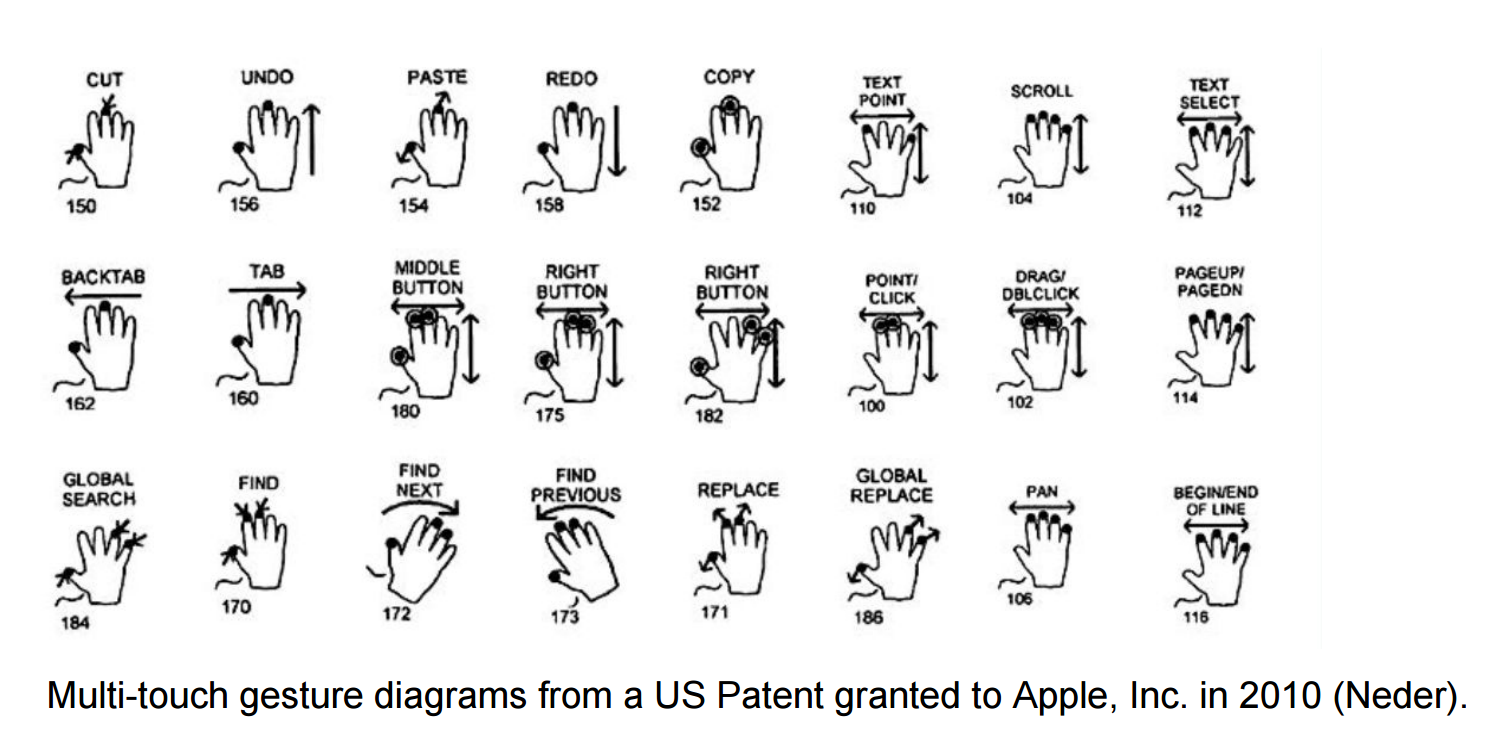
Unpatentable Multitouch Aerobics
In the face of relentless privatization, and capitalism's extended reach into our homes, friendships and psyches, it feels as if the last frontier is the body itself. Yet technology and its devices teach our bodies new gestural lexicons - we are zooming, swiping, and flicking our way into a new era. But Apple, Inc. is “indisputably striving to corner the market on how we move our fingers across screens,” noted Alexander Provan, citing the company’s most recent win of a patent infringement lawsuit against Samsung for its multitouch gestures. These gestures are new social codes. These gestures have an owner: every time you slide two fingers up and down a trackpad, you’re leasing your movements from Apple; and they, in turn, are owning a little part of you. How are we to re/act in the face of the commodification and privatization of our own bodily gestures? Join the aerobics workout and you can tackle the anxiety of bodyownership in the face of technology.




New technologies, like virtual reality, aim to unshackle the spectator from the apparatus by letting him move around in space and providing an embodied interaction with images. Yet, at the same time, Apple Inc. is “indisputably striving to corner the market on how we move our fingers across screens,” notes Provan, citing the company’s most recent win of a patentinfringement lawsuit against Samsung. Apple even attempted to trademark the term, “MultiTouch,” but was refused on the grounds that the term was both too general and in use prior to Apple’s application (Apple Inc. v. Trademark Trial and Appeal Board). These new social codes are designed to feel intuitive, natural, and easeful. They are designed to erase the traces of having ever been designed at all. This is why the iPhone comes without a user manual—a stark contrast to the 1984 Macintosh manual that goes into great detail over how to use a mouse (Kaehler).


Apple, Inc. is patent hungry, holding roughly 15,500 patents, about 8.500 of which are U.S. patents. In U.S. patent number 7877707 B2, filed on Jan 25, 2011, Apple patented the gesture of of pinching and spreading to zoom on a responsive, multitouch screen.

Works of choreography may be copyrighted under US Law. Therefore, if Apple Inc. holds the patent to such motions on responsive tablets, Artist Liat Berdugo attempted to file for the copyright to the “dance” of zooming herself, as under U.S. Copyright Law:

Video stills from Zoom
December of 2013, Berdugo was notified that the copyright protection filing number 1913988071 was denied because the work deposited was not choreography, but rather quite remarkably! deemed an “aerobic exercise program” by the US Copyright Office. (The full response from the US Copyright office is viewable here.)
Therefore, Berdugo and collaborator Phoebe Osborne created an actual aerobics routine entitled Unpatentable Multitouch Aerobics. The artists gave a workshop in how to practice this new sporting routine at the first annual World Wide West Summit in Point Arena, CA.
After all, the multitouch gestures are new social codes that are literally programmed into the device, and delineated clearly and beautifully as movement scripts in the panoply of patents that Apple has filed. These gestures have an owner. Every time you slide two fingers up and down a trackpad, you’re leasing your movements from Apple; and they, in turn, are owning a little part of you. The reason this is consequential is that gesture, of course, expresses thought. But gesture also impacts thought. “Gestures look upward, into the discourse structure, as well as downward, into the thought structure,” writes McNeill. Recent studies from The New School’s Psychology research division show that right or lefthandedness impacts the decisions over what images are “good” or “bad” when images of equally strange objects are shown (Pitt). Righties prefer the right one, lefties the left. Just as the screen exerts its immobilizing control over the user, so, too, does this “haptic choreography” we perform exert a physical control over our movements and also over the mental frameworks they create.
Citations
McNeill, David. Hand and Mind: What Gestures Reveal about Thought. Chicago: University of Chicago
Press, 1992. Print.
Neder, Mary Ann. “US Patent and Trademark Office Grants Apple MultiTouch Gesturing Patent.”
IPADMODO 29 Apr 2010. Web. 6 May 2013
Pitt, Benjamin. Personal Interview. 1 Mar. 2013.
Provan, Alexander. “Gestural Abstractions.” ARTFORUM, Mar. 2013. Web. 5 May 2013.
